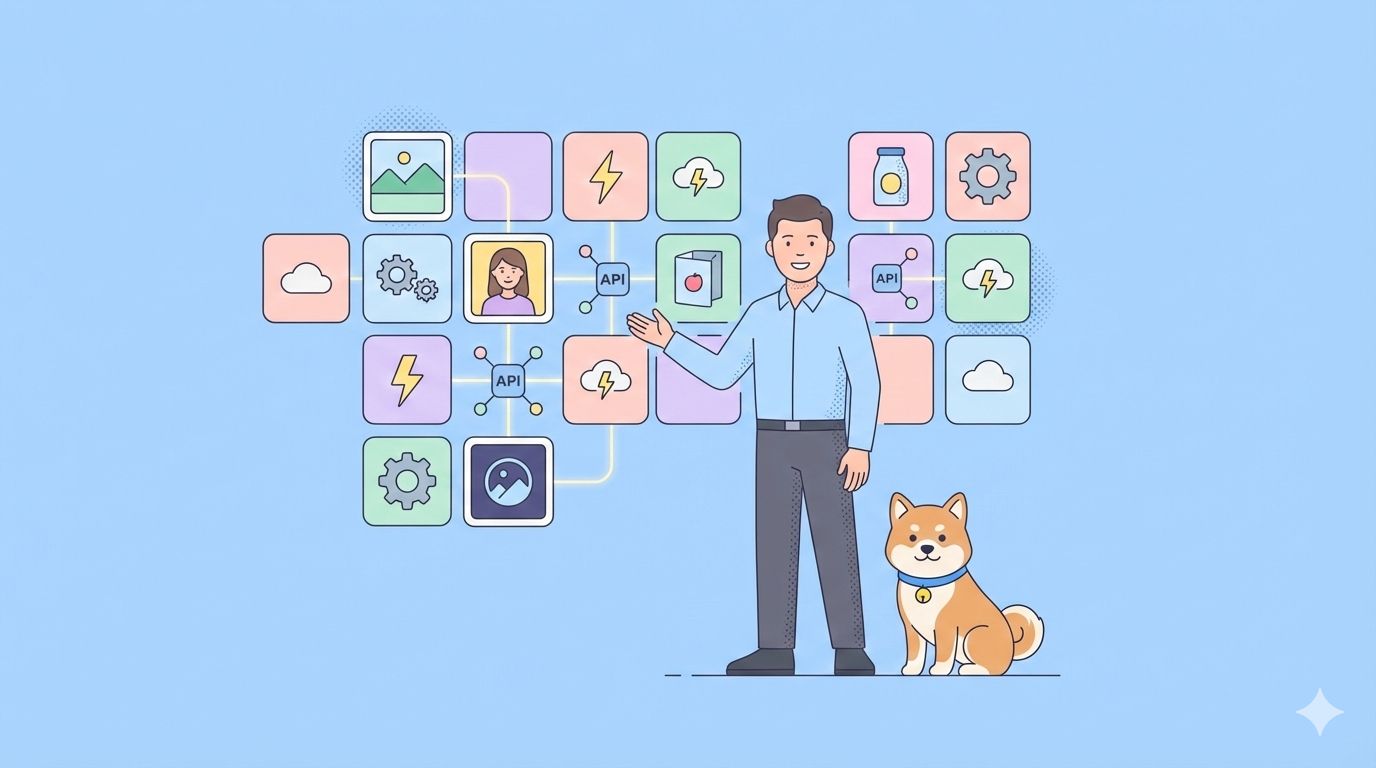APIs are the glue holding modern software ecosystems together. They allow different systems to communicate, share data, and create seamless experiences for users. But with constant updates and evolving requirements, how do you ensure your APIs remain reliable and backward-compatible? Enter API versioning.
In this post, we’ll dive into the best practices for API versioning, ensuring your APIs stay relevant and your integrations remain smooth.
Why API Versioning Matters
Before we jump into the nitty-gritty, let’s understand why API versioning is crucial. Imagine your API is an online store. One day, you decide to reorganize your store layout. If you don’t inform your regular customers about the changes, they’ll be lost, frustrated, and might even leave. The same goes for API users. When you update an API without versioning, you risk breaking existing integrations, causing disruptions and dissatisfaction.
Benefits of API Versioning
- Backward Compatibility: Ensures existing applications continue to work seamlessly with your API.
- Controlled Evolution: Allows you to introduce new features and improvements without disrupting existing users.
- Clear Communication: Helps users understand what’s changed, what’s new, and what’s deprecated.
Now that we know why versioning is essential, let’s explore the best practices to implement it effectively.

Best Practices for API Versioning
1. Use Semantic Versioning
Semantic versioning (SemVer) is a widely adopted system that uses a three-part version number: MAJOR.MINOR.PATCH.
- MAJOR: Increment when you make incompatible changes.
- MINOR: Increment when you add functionality in a backward-compatible manner.
- PATCH: Increment when you make backward-compatible bug fixes.
For example, going from version 1.0.0 to 2.0.0 indicates a major change that might break compatibility, while 1.1.0 indicates new features added in a backward-compatible way.
2. Include Version in the URL
One of the most common and clear methods of versioning an API is to include the version number in the URL. This makes it obvious which version of the API the client is using.
For example:
https://api.yourservice.com/v1/resource
This approach is straightforward and easily understandable.
3. Use HTTP Headers for Versioning
Another method is to specify the version in the HTTP header. This keeps the URL clean and allows you to version different aspects of your API more flexibly.
For example:
GET /resource HTTP/1.1
Host: api.yourservice.com
API-Version: 1
While this method can be more flexible, it’s less visible than URL versioning and might be overlooked by some developers.
4. Embed Version Information in Media Types
For APIs that use content negotiation, you can embed the version number in the media type. This method is particularly useful for APIs that return different formats of data.
For example:
Accept: application/vnd.yourservice.v1+json
This approach is clean and adheres to the principles of REST, but it can be more complex to implement and understand.
5. Deprecate Versions Gracefully
When you need to retire an old version of your API, do it gracefully. Provide ample warning to your users and a clear migration path to newer versions. Communicate through multiple channels—API responses, documentation, emails, and community forums.
6. Maintain Clear and Up-to-Date Documentation
Your API documentation should clearly state the current version, changes in each version, and the lifecycle of each version. Use changelogs, migration guides, and deprecation notices to keep users informed.
7. Implement Versioning in Testing
Ensure your testing framework includes tests for different versions of your API. This helps catch any compatibility issues early in the development process.
8. Provide Versioning Strategy in Your SDKs
If you provide SDKs for your API, ensure they support multiple versions and make it easy for developers to switch between them. This can involve setting default versions or allowing version specification in the SDK configuration.
9. Consider Deprecation Headers
Use HTTP headers to inform users about deprecation timelines. For example, you can include a Deprecation header with a date indicating when the version will no longer be supported.
10. Monitor API Usage and Deprecation Impact
Use analytics to monitor the usage of different API versions. This helps you understand which versions are widely used and plan your deprecation strategy accordingly. Notify users well in advance before sunsetting a version.
Implementing API Versioning with Apidog
In building and testing APIs, developers often navigate through various versions and iterations of their endpoints. Access to historical API requests is invaluable for retrieving insights, troubleshooting, and reviewing modifications, but manually tracking these versions can be cumbersome, especially in collaborative and multi-environment settings.
Tools like Apidog simplify this process by offering robust solutions for testing, documenting, and mocking APIs. A key feature is its ability to save API request histories or versions, allowing developers to effortlessly track and store every modification. Whether it's a minor tweak or a major overhaul, Apidog captures and preserves each iteration for future reference.

This feature is invaluable for rolling back to older API requests, eliminating the need to manually reconstruct previous configurations. Developers can easily access saved histories on apidog.com to revert to any version.
Saving API request histories also enhances collaboration, allowing team members to review past changes and build on each other's work. Apidog.com provides a comprehensive record of the API development journey, improving agility, accuracy, and efficiency.
For seamless API versioning and team collaboration, rely on Apidog.com to preserve your API request histories.
Real-World Examples of API Versioning
Let’s look at how some popular services handle API versioning:
1. GitHub
GitHub uses URL versioning for its API. Each API call includes a version number in the URL:
https://api.github.com/v3/repos
GitHub also provides detailed documentation and changelogs to help developers transition between versions.
2. Stripe
Stripe uses both URL versioning and a default version for new accounts. Developers can specify the version they want to use in their requests:
curl https://api.stripe.com/v1/charges \
-H "Stripe-Version: 2020-08-27"
This approach provides flexibility while maintaining backward compatibility.
3. Twitter
Twitter embeds version information in the media type for its API. This method allows for granular versioning of different API resources:
Accept: application/vnd.twitter.v1+json
Twitter’s API documentation includes detailed information on versioning and deprecation.

Common Pitfalls in API Versioning
While implementing API versioning, avoid these common pitfalls:
1. Ignoring Backward Compatibility
Always consider how changes will impact existing users. Breaking changes should be minimized and clearly communicated.
2. Lack of Communication
Failing to inform users about new versions, deprecations, and migrations can lead to frustration and churn. Use multiple communication channels to keep users informed.
3. Complex Versioning Schemes
Overly complex versioning schemes can confuse developers. Stick to simple and clear methods like semantic versioning and URL versioning.
4. Neglecting Testing
Testing across different versions is crucial. Ensure your testing strategy includes comprehensive tests for all supported versions.
5. Not Providing Migration Paths
When introducing a new version, provide clear migration guides to help users transition smoothly.
Future of API Versioning
As APIs continue to evolve, so will versioning strategies. Here are some trends to watch:
1. Automated Version Management
Tools like Apidog will play a significant role in automating version management, making it easier to handle versioning and deprecation.
2. GraphQL and Versioning
GraphQL’s flexible query system reduces the need for traditional versioning. However, versioning might still be necessary for major changes.
3. Microservices and Versioning
With the rise of microservices, versioning will become more granular. Each microservice can have its own versioning strategy, adding complexity but also flexibility.
Conclusion
API versioning is essential for maintaining reliable and flexible integrations. By following best practices like semantic versioning, clear documentation, and graceful deprecations, you can ensure your APIs remain user-friendly and future-proof.
Don’t forget to download Apidog for free and take advantage of its powerful features to manage your APIs effectively.




